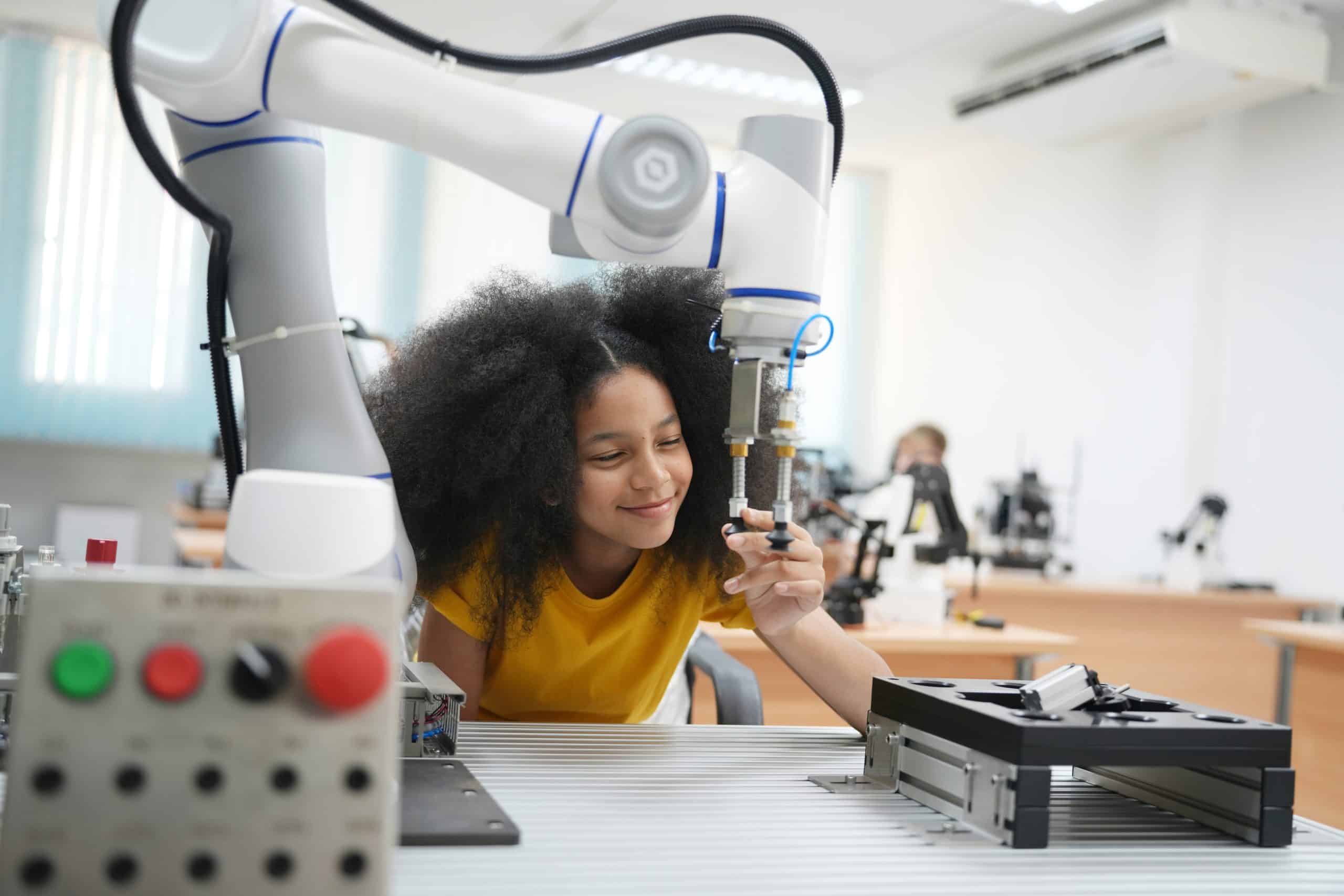Can Smart Glasses with Augmented Reality Replace Traditional Textbooks?

In the era of rapidly evolving technology, the boundaries of reality are constantly being pushed and redefined. One such technological innovation that has the potential to shake up the traditional education system is the use of smart glasses with augmented reality (AR). By bridging the gap between the real world and the digital world, augmented reality offers an immersive, interactive, and experiential method of learning. It’s time we delve deeper into how this technology could revolutionize the way students learn and possibly replace traditional textbooks.
Augmented Reality in Education: An Introduction
The integration of technology in the classroom has always been a contentious subject, with debates surrounding its effectiveness and appropriateness. However, with augmented reality, the conversation takes a new turn. AR is a technology that superimposes computer-generated images on a user’s view of the real world, thereby providing a composite view. This technology has found applications in various fields, and education is no exception.
Cela peut vous intéresser : How Is AI Enhancing Personalized Career Coaching Services?
Smart glasses with augmented reality bring a new perspective to learning, allowing students to immerse themselves in the content they’re studying, rather than just reading about it. This technology provides a hands-on experience, making education more engaging and interactive.
Augmented Reality and Immersive Learning Experience
Remember when you struggled to visualize complex concepts in your science textbook? Well, with augmented reality, these challenges could be overcome. Smart glasses with AR can bring abstract scientific concepts to life, allowing students to explore and understand them in three dimensions. This can significantly enhance the students’ comprehension and retention of complex topics.
Dans le meme genre : What Advances Are Being Made in Electric Wheelchair Mobility and Autonomy?
Imagine studying about the solar system by actually witnessing the rotation of planets around the sun, or learning about the human anatomy by exploring a 3D model of the human body. This immersive learning experience can help students grasp complex educational content in an engaging and effective manner.
Interactive and Engaging Education with Augmented Reality
Classroom learning is often criticized for being one-dimensional, detached, and unengaging. However, augmented reality can change this by making education a highly interactive process. Smart glasses with AR can facilitate real-time interaction with educational content, thereby fostering critical thinking and problem-solving skills among students.
For instance, students can manipulate the elements of a physics equation or a chemistry reaction to see how changes affect the outcome. AR applications can also enable collaborative learning, where students can work together in a virtual environment, thus improving their teamwork and communication skills.
Training and Skills Development through Augmented Reality
Augmented reality has proven to be a powerful tool in training and skills development. In the medical field, for instance, AR can enable students to practice surgical procedures in a controlled and risk-free environment. Similarly, in engineering or architecture, students can use AR to understand the structural intricacies of buildings or machinery.
AR-based training provides a realistic and hands-on experience, thereby making the learning process more effective. Moreover, AR can offer personalized learning experiences based on individual abilities and learning styles, thus catering to the diverse learning needs of students.
The Practicality of Replacing Textbooks with Augmented Reality
While the potential benefits of AR in education are undeniable, one might question the feasibility and practicality of replacing traditional textbooks with smart glasses. For one, the cost of AR technology could be a significant barrier, especially for schools with limited resources. Moreover, the integration of AR in the classroom would require teachers to be trained and comfortable with using this technology, which could be a challenging task.
However, with continuous advancements in technology and decreasing costs, the use of AR in the classroom could become more prevalent in the future. As the digital literacy of both teachers and students improves, the integration of AR in education could become seamless.
The shift from traditional textbooks to smart glasses with augmented reality may not occur overnight. However, the possibilities that AR brings to education are certainly exciting and hold great potential for transforming the way students learn. In the long run, augmented reality could indeed become an integral part of the educational landscape, enriching learning experiences, and bringing education closer to reality.
Augmented Reality and Special Education
In recent years, the field of special education has been greatly benefited by the advancements in technology. Augmented reality, with its ability to create interactive and immersive learning experiences, has the potential to transform the way students with special needs learn.
Visualizing complex concepts can be particularly challenging for students with cognitive and learning disabilities. However, smart glasses with augmented reality can significantly contribute to overcoming these challenges. By bringing abstract concepts to life, AR allows these students to interact with and understand the content at their own pace and in their own way. It encourages self-directed learning, thereby fostering independence and confidence among students with special needs.
Moreover, augmented reality can make education more accessible for students with physical disabilities. For instance, a student who is unable to perform a science experiment due to physical limitations can use AR to participate virtually, thus having the same opportunity to learn and understand as their peers.
In the realm of special education, augmented reality can also prove to be a powerful tool for social-emotional learning. AR can help in creating virtual scenarios where students can practice social skills and emotional responses, providing valuable real-time feedback and reinforcement.
It is essential to remember that while AR can significantly enhance the learning experiences for students with special needs, it should supplement, not replace, traditional methods of teaching. The goal should always be to use technology as a tool to amplify learning, not as the sole method of instruction.
The Future of Education: Blending Reality with Learning
As we stand at the crossroads of traditional education and technology-driven learning, it is clear that the future of education lies in combining the best of both worlds. AR, with its potential to bring learning to life, could be the key to unlocking this future.
Education augmented with AR could lead to better learning outcomes by making learning more engaging, interactive, and immersive. By allowing students to visually explore and manipulate virtual objects in real-time, AR can foster a deeper understanding of complex concepts.
Moreover, augmented reality technology can make learning more personalized. Each student learns differently, and AR allows for these differences. By adapting to individual learning styles, AR can help create more targeted and effective learning experiences.
It’s also worth noting that a shift towards AR in education does not necessarily mean the end of traditional textbooks. These could still have a role to play, perhaps as a complement to AR, offering a balanced approach to learning.
Google Scholar and other education technology platforms are already exploring the possibilities of integrating AR into their systems, and the results so far are promising. However, it’s crucial to remember that successful integration of AR in education will require substantial investments in technology infrastructure and teacher training.
The journey towards fully augmented reality education may be gradual, but it is indeed one that holds great promise. One can only imagine the endless possibilities when students are not just confined to the pages of a textbook but can also step into those pages, interact with the concepts, and experience learning in a whole new dimension.
In conclusion, while the adoption of AR in education faces challenges such as cost and the need for significant teacher training, the potential benefits are undeniable. With time and continued technological advancements, it is conceivable that augmented reality could become a staple in classrooms, enhancing learning experiences, and shaping the future of education. The integration of AR into the education system signifies exciting times ahead for both educators and learners alike.
